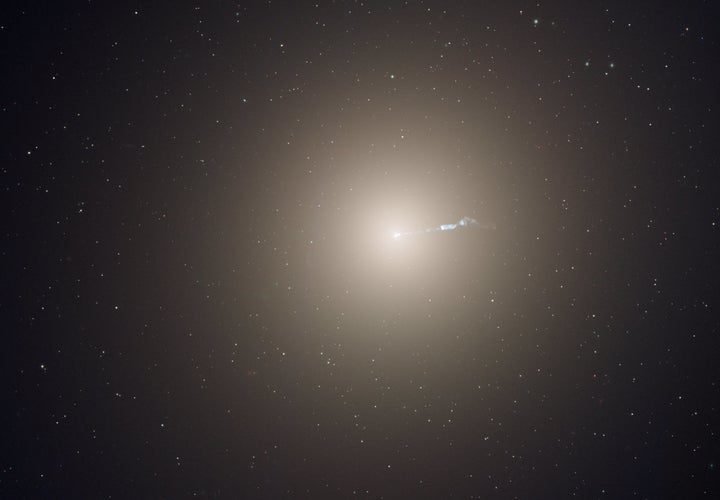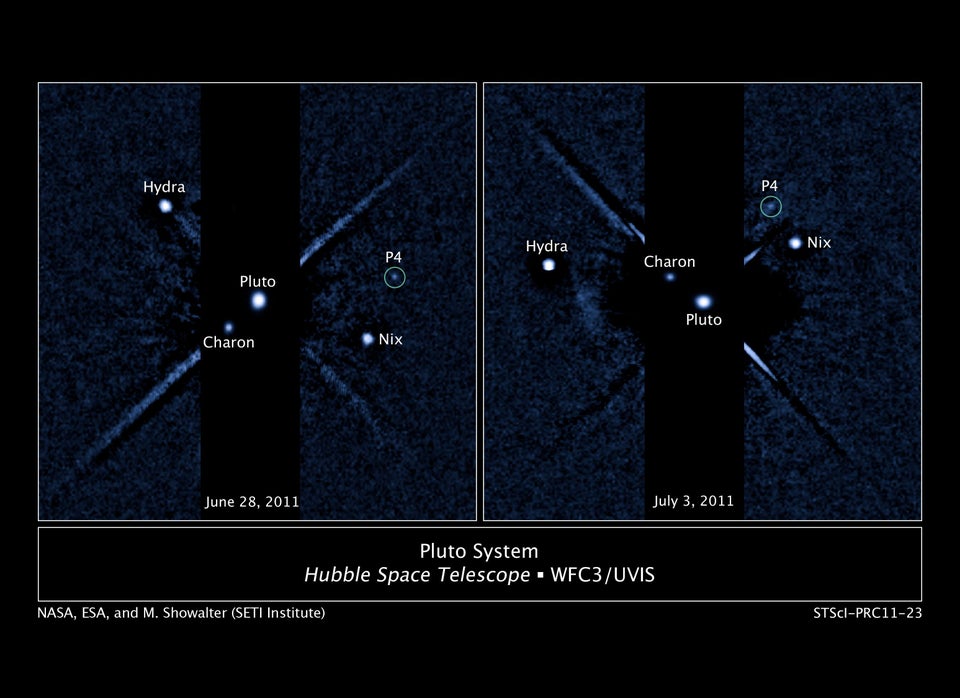
Twinkle, twinkle little star.
It turns out that the increasing and decreasing brightness of some stars might hold clues to their host galaxy's age, according to a study published in the journal Nature on Monday. Since stars begin to pulsate near the end of their lifetime, that can provide valuable insight into a galaxy's own lifetime.
Astronomers have measured the "pulses" of thousands of stars in the distant elliptical galaxy Messier 87, or M87, and were able to use that data to calculate that it is about 10 billion years old, a number that corresponds with previous estimates found using other techniques.
"We have relatively few ways to determine how old galaxies are," Dr. Charlie Conroy, assistant professor of astronomy at Harvard University and the study's lead author, told The Huffington Post. "This gives us a new tool to determine a galaxy’s age, which is especially important for ancient galaxies like M87. The stars in this galaxy probably formed a very long time ago -- maybe 10 billion years ago -- and if that’s true then this galaxy is a fossil relic from a much earlier time in the universe."
The astronomers analyzed images of galaxy M87 taken by the Hubble Space Telescope in 2006. They noticed that the combined illumination of all the stars in the galaxy, which is located some 53 million light-years from Earth, varied every 270 days due to the increasing and decreasing brightness of each star.
By marking these 270-day occurrences, the researchers concluded that they could use the metric to determine the galaxy's age -- and it could be applied to other galaxies.
"This is the first time this time variability of the combined light of millions of stars has been considered, and, amazingly, we were able to detect it in the galaxy M87," Dr. Pieter van Dokkum, professor of astronomy and physics at Yale University and a co-author of the study, told HuffPost.
The researchers hope to use this new technique to calculate the age of other galaxies that are actively forming stars.
"Our models suggest that the pulsations will be stronger in younger galaxies, and that's something we'd love to test," Jieun Choi, a graduate student at Harvard and a co-author of the study, said in a statement.
Conroy said he's eager to see what the additional research may yield.
"One thing we know from history is that unexpected discoveries happen whenever new windows are opened up into the universe," he said. "So we may be surprised by what we find as we observe more galaxies in this way."
Also on HuffPost:

